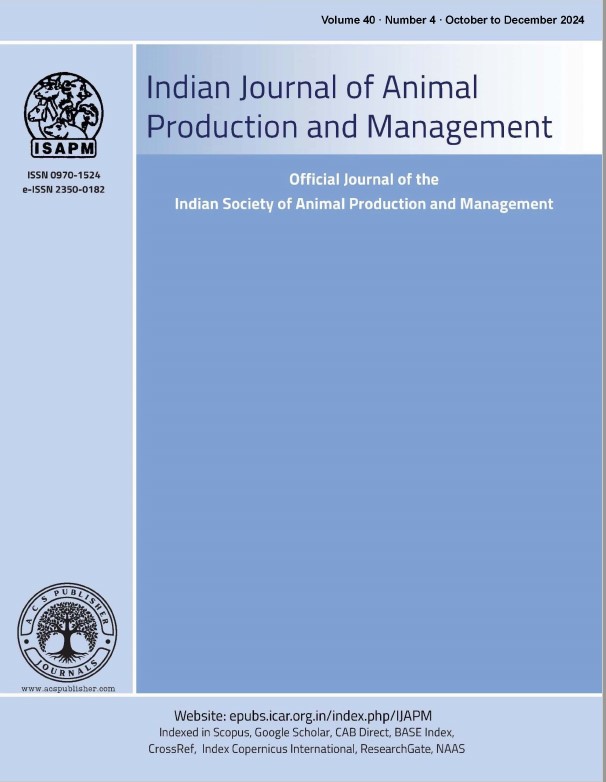Effect of false ceiling on microclimatic variables of crossbred cattle during rainy season
DOI:
https://doi.org/10.48165/ijapm.2020.36.1and4.18Keywords:
Asbestos roof, Crossbred cattle and Rainy season, False ceiling, MicroclimateAbstract
The present study was conducted to find out the effect of false ceiling materials on microclimatic variables of crossbred (Vrindavani) cattle shed during rainy season. Twenty four crossbred cattle were randomly distributed equally into three groups (8 in each) on the basis of their average milk yield, parity and body weight. Control group (T0) animals were kept under asbestos roof without any ceiling insulation, while modified shed had false ceiling of Expanded Polyethylene (EPE) sheet (T1) and paddy straw thatch (T2) under asbestos roof. The average maximum temperature was significantly (p<0.05) lower in T2 (33.50±0.16°C) and T1 (33.67±0.17°C) in comparison to T0 (35.12±0.21°C). The average relative humidity (RH) % at 2:00 PM was significantly (p<0.05) higher inT1 (75.72±0.77) and T2 (75.98±0.75) than T0 (73.28±0.82). The overall THI at 2:00 PM and overall average temperature humidity index (THI) was significantly (p<0.05) lower in T2 (85.69±0.16 and 83.61±0.20) and T1 (85.84±0.16 and 83.73±0.20) as compared to T0 (87.32±0.20 and 84.67±0.24). The findings of the present study revealed that false ceiling installed underneath the asbestos roof might have blocked emitted radiation considerably. Thus utilization of paddy straw thatch and EPE sheet as false ceiling under asbestos roof may help in providing relatively comfortable microclimate to the animals in comparison to simple asbestos roof shed. Ceiling insulation could observe complementary effect in reducing heat stress in dairy animals when utilized with other heat amelioration measures.

